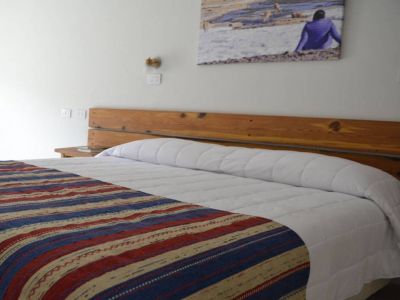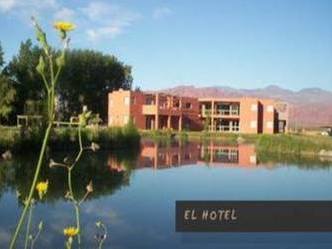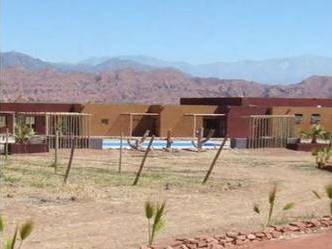Discovering Villa Unión
The simplicity of the city makes contrast with the spirit of its people, who have turned it into a productive metropolis with a tourist vision that shares the joy of its music and songs.
Known as Villa Unión del Talampaya, this small town continues to grow as visitors go around it. The connection with the nearby attractions and especially with Talampaya National Park, as well as with Laguna Brava and Ischigualasto Provincial Park, guarantee that this district is a perfect starting point for a sightseeing tour. We accessed its main street, called Nicolás Dávila -which is also National Route 76- and we got the feeling that the town was asleep, quiet, kind of lethargic. Its main square, full of shady trees, is watched by Our Lady of the Rosary Church, which dates back from the late nineteenth century. Our first decision was to park the car and head for La Loma Viewpoint following Perón Street. It lies five blocks away from the square. We went up a steep staircase. The Stations of the Cross led us to the top, right opposite a huge cross. We had the chance to behold the city, the valley, the Bermejo River, the plantation in neighboring farms and the mountain area where the Famatina Range stands out. The figure of Felipe Varela, hero of local peoples, lies to one side.
Behind the viewpoint, always on foot and following Santa Teresita Avenue, we reached another natural balcony: Embalse Lateral. The panoramic view opening up to the West displays another mountain range with varied colors. It was imposing. Besides, we were in front of a water body where swimming is forbidden. However, sunbathing is allowed at its beach and fire pits are available for visitors to spend the day. In fact, it is a good angling spot for carp. Also, hiking enthusiasts use it as a destination when the temperatures are mild. People from La Rioja are cheerful and enjoy singing, dancing and celebrating traditions. Even if we did not attend any of its festivals, we heard about them: they are highly appreciated by locals and visitors alike. The Vineyard Worker National Festival takes place in January. This is an authentic expression of gratitude to Mother Earth for the fruit of the vineyards. Wines with high alcoholic content, patero (foot-pressed wine) and Torrontés are enjoyed in wine tasting sessions. In February, the famous Chaya Riojana is held. It combines all the rites and legends regarding Princes Chaya and Pujllay, accompanied by the classic urban “topamientos”, games with flour and basil and typical food. In turn, the long-awaited Carnival of Joy is also celebrated in February. A parade of comparsas floats and batucada invade the city for two nights. This event is extremely relevant in the province due to the outfits and the artistic show. The high religious spirit of the locals is present in two well-known festivities. One of them pays tribute to its Patron Saint: Our Lady of the Rosary, on the first Sunday in October. The other one, honors the protector of the district: Saint Joseph, on March 19. All the denizens take part in these events and stalls selling home-made jam and regional dishes are put up. We noticed the presence of 4WD vehicles taking tourists around the attractions offered by Villa Unión. The town did not look the same any more. And we had not been there for long!
Mónica Pons
Eduardo Epifanio
Contact of the excursion or tour
Secretaría de Turismo Municipal
Joaquín V. Gonzalez Esq. Hipolito Irigoyen, Villa Unión, La Rioja, Agentina
Phone: +54 3825-470543

























